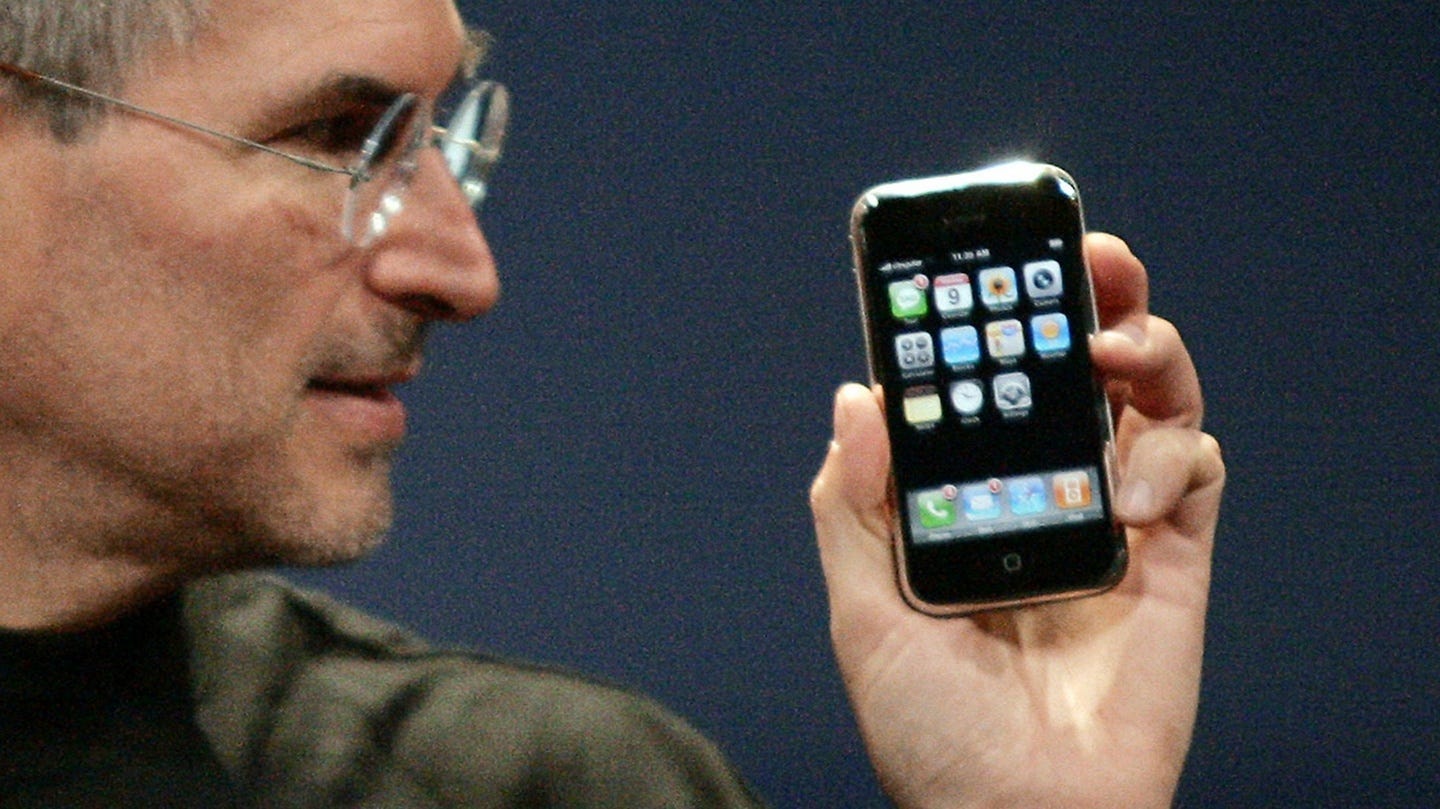Hello again, and thanks for reading this edition of the Becoming Metaversal Newsletter. Welcome to all the new subscribers, or if you haven’t subscribed yet you can do that here:
As usual, we start the newsletter off with a few of the highlights of what’s been happening in the world of Web3, NFTs, and the Metaverse. Honestly, I have no idea where to start given how much has happened in the past two weeks. But, without discussing the Superbowl because I touch on that in the deeper dive thought piece below, here are a few of the highlights that caught my attention:
Feds arrest a married couple Ilya Lichtenstein and Heather Morgan (aka Rapper Razzlekhan) and seize $3.6 billion worth of hacked bitcoin in what is truly one of the craziest stories ever. Crazy enough that it deserves a few links:
If you want to read the news worth angle, the Washington Post has you covered here
If you want to understand how the money was found and what it really says about laundering money through Crypto, then read this piece from Wired
Or if you’re just interested in the crazy characters behind the whole thing, well then you’ll have to wait a bit, but Netflix will be giving that couple the “Tiger King” Treatment and turning their story into a series – Read more
On the topic of entertainment, Reese Witherspoon’s company Hello Sunshine will be adapting the World of Women NFT platform into movies and TV shows – Read more
Tezos inked a £20m pound deal to become the title sponsor of the Manchester United Football Club. It’s said that the deal includes plans to improve the fan experience by building on Tezos. – Read more
Terra signs a 5 year $40m Sponsorship deal with the Washington Nationals. Terra’s UST Stablecoin will be accepted at the park as part of the deal – Read more
NFL gives NFTs to Superbowl ticket buyers - Read more
The state of Colorado is likely to be become the first state to accept tax payments in BTC – Read more
Ukraine legalizes Crypto and they are already trading more Crypto than FIAT currency – Read more
Andrew Yang launches a Web3 Lobbying DAO called Lobby3 with the intent of influencing policy on this evolving technology in Washington DC – Check out the Lobby3 site
In trying to freeze the Crypto wallets and assets of protestors, Canada may actually be making the case for decentralization hence the need for Crypto assets – Interesting POV here
Melania Trump has been launching NFT’s recently, but it looks like she may have actually had to buy her NFT herself according to this article. That isn’t stopping her from launching more though as she launches a new collection to commemorate the Trump Presidency – Read more
NFT Marketplace Cent shuts itself down due to rampant fakes. It’s a problem also seen on OpenSea which states that over 80% of the NFTs created with their free minting tool were plagiarized.
Samsung integrating Crypto Wallets into the Galaxy S22 phone – Read more
DeFi powerhouse Aave launches Protocol for decentralized Social Media – Read More
Snoop Dogg buys Death Row Records and proclaims it the first NFT record label. He then launches his new album B.O.D.R. as a Stashbox NFT for $5,000 and quickly sells 10,000 of them (in addition to the traditional music sales and streaming revenues). – Read more
 The @SnoopDogg Stash Boxes are available for a limited time beginning NOW! Shop: galamusic.com #GalaMusic #SnoopDogg #blockchain
The @SnoopDogg Stash Boxes are available for a limited time beginning NOW! Shop: galamusic.com #GalaMusic #SnoopDogg #blockchain
Now you’ve got the news, here’s what I’ve been thinking about.
By now the Superbowl is old news, and we have all seen dozens of articles praising Coinbase for the simplicity of their QR code. If somehow you missed those stories here are a few to help you catch up:
The Verge tells us that the overwhelming response to the ad cause the app to crash
Adweek explains how the simplicity of connecting people across channels made this great
Coinmarketcap talks about the numbers, explaining that 20 million people followed the QR code in 60 seconds
The Drum says that Coinbase “broke the internet” with their ad
PCMag takes a different approach by explaining how the ad opens opportunities for scammers to copy their QR code with fakes
Mashable calls the ad brilliant
I could go on, but you get the idea. And the articles are correct, the simplicity of their strategy is brilliant, and you can’t argue with the effectiveness. But what’s more remarkable to me than this one ad, was the sheer number of Crypto-related ads on the day. Crypto exchanges FTX, Crypto.com, Coinbase, eToro were all advertising. But it wasn’t just the exchanges. Meta hyped Oculus VR, Intuit Turbo Tax referenced their ability to help Crypto traders with their Taxes, and Bud Light NEXT use the Nouns NFT in an ad (the preceding links all connect to the Superbowl ads, not the company website – just in case you wanted to see them).
I’ve no idea what the spend was for all of this, but I’d guess it was over $50 million in total. In short, it was a big day for Crypto Marketing.
But wait … spending money on Crypto Marketing goes against a common belief in the crypto space that where Web2 relies on advertising to scale, Web3 will grow through “self-marketing”. This being the result of the builders, creators, and users of a project all having aligned interest in the projects promotion and success through tokenized incentives. This means that ultimately the users of a Web3 project behave like owners and naturally promote the project such that it can grow with no marketing spend.

I know that you are thinking that Coinbase doesn’t have a token so the “self-marketing” thesis doesn’t apply to them, and this is true. But both FTX and Crypto.com do. The point is that while the tokenized incentives absolutely support the bootstrapping phase of business, Marketing still ends up being needed to maintain and accelerate growth once businesses reach a certain size.
Looking at it another way, one might even say that marketing still plays a critical role early in the life of Web3 and token-based projects. Just look at Bitcoin. While there may not have ever been any “advertising” in the traditional sense, the Satoshi White Paper should be looked like the ultimate product brochure. And the fact that it was written by a mysterious individual who disappeared makes the content even more “talkable” and market worthy.
The idea that marketing is being made irrelevant by a new category of technologies and brands is not a new story. Ironically, the same thing was said about Web2 brands: social networks and web utilities won’t need to advertise because people naturally share their links and services.
And while it’s true that Google went from 1998 to 2010 before they launched their first big TV ad campaign (Parisian Love - which also happened to run during the Superbowl), today they have significant marketing spend.
Although I will admit that my favorite ads from Goole were the recruitment billboards they ran in the San Francisco Bay Area which were nothing more than mathematical equations where the answer (if you could answer them) brought people to a website where they would be one step closer to a job interview. The billboards didn’t even have the Google brand on them. They were designed to intrigue what they deemed to be the right kind of candidate with a problem to solve. But I digress.
Getting back to the point, Facebook also saw its initial growth come from virality. Founded in 2004, they went until 2012 before launching their first tv ad, at the time they had 500 million Monthly Active Users.
So while I fully agree with the point that Web3 tokenomics change the initial need for marketing during the start-up / bootstrapping phase of some businesses, the idea that marketing will be made irrelevant by Web3 is in my mind unlikely. It’s true that some of the tools and strategies will change, but brands will still look to expand awareness, reach, and conversion beyond the direct network of people they already engage with and their peers. And this point brings us back to the Superbowl, the mass reach advertising during the Superbowl allows, and to the bigger problem with the ads we saw.
While there was definitely a lot of FOMO on the screen, what we didn’t see were ads that demonstrated the potential for Web3 to solve real problems or to offer new and more equitable business models. And that is because doing something new is hard, and the truth is that the potential societal and corporate benefits it aims to deliver have not yet materialized at scale.

I love that Tweet. There is definitely some irony in there, but it is also true that it’s too easy to make a mistake, lose money, forget a seed phrase, or in one of many other ways get caught out, get hacked, or accidentally lose money when working or investing in this space. And that is just NOT good enough if we really want to see mainstream consumer adoption.
I’ve heard many people draw parallels between the questions that existed in the mid-’90s around the scaling potential of the internet and the questions that exist today about the future potential for Web3. It’s a useful parallel in that it forces us to ask if mainstream adoption of the internet was inevitable from day one, or if there were catalysts that created a chain reaction resulting in its growth.
While internet penetration grew steadily from the mid-’90s, there was also significant apprehension about things like inputting your credit card details into a website. It does sound kinda similar to what we see today, doesn’t it.
But to me, there is one event that stands out as a pivotal moment and that is the launch of the iPhone. I use this example because all of a sudden, here was a device that came from the company that made the iPod, but it was always online. No dial-up connection. No need to be plugged into a LAN cable. But most importantly, it was simple to use.
I know it’s a bit cliché to use Steve Jobs as an example, but watch him demo the first iPhone at the 2007 MacWorld event. You’ll see him unlock the phone and scroll with his finger. You see him scroll through album art with his fingers. Things that seem intuitive and natural today, but when you hear the audience applause it’s clear that it was anything but that in 2007. His demo is a portrait of ease and simplicity.
Web3 needs its iPhone moment
And while I definitely believe it’s coming, despite all the advertising at the Superbowl, it pains me to say it, but we aren’t quite there yet. That said, there is a lot of progress being made and a lot of interesting companies pushing boundaries that are worth knowing about.
Enabling interoperability in the Metaverse:
Universal Scene Description (USD) – USD is an open-source project developed by PIXAR that provides a common language for developing 3D data. Just as HTML allowed compatibility across browsers and that ultimately made the web experience consistent, enjoyable, and easy for all to use, USD will be that language for the Metaverse. If you want to hear more about that, here is a great interview from Forbes with Richard Kerris, VP of the Omniverse at NVIDIA.
Working to solve privacy and identity challenges:
Burrata.xyz are building Identity Tokens that once set up in your wallet, will allow you to pass through KYC (know your customer) gates without the need to share any private data or re-verify your identity. In short, you verify your identity once and then using Zero-Knowledge Proof (ZKP) technologies, all services can validate what sort of access you should have without the need to pass them any identity data. The company just came out of stealth and raised $7.75 million from Stripe and Variant to make identify validation a thing of the past.
Lens Protocol is building a user-owned and open social graph that anyone can plug into. The idea is to partner collaboration and control. In short, the network is open and grows with every project it connects to, so you instantly gain value from everyone else using the protocol. But unlike social media today, Lens Protocol doesn’t own the content, the creator does. So they can take it, monetize, move it, do what they want. Their ambition is to let you own your identity.
Fraud Prevention
Sardine.ai is one of my new favorite projects (they aren’t actually new, just new to me). With Fraud making headlines in the NFT space, they are building out the AI platform to prevent it.
While these technologies are great and represent just the tip of the iceberg of amazing companies building out Web3 solutions for real-world problems, the truth is that none of them are likely to deliver us with Web3’s iPhone moment. These are all technologies that will enable great experiences, but they don’t own the interface or the device that will give us that great experience to make Web3 feel easy and intuitive.
I believe that moment will come from a crypto wallet brand.
After all, your wallet will be your identity (read more on this from my previous newsletter here). It will be your gateway across platforms ensuring consistency of experience and understanding. But today it’s a category that can be very intimidating.
There are hot wallets and cold wallets, custodial, non-custodial. Most people just want to know their identity, and their assets are stored in a safe place. They’ve always trusted their banks to keep things safe for them without actually needing to know the details of how their money is stored. So why should this have to be more difficult? Don’t get me wrong, I understand how difficult the technology challenge is, but consumers gravitate towards the easiest solution, so the challenges must be solved, education must be part of the process, and household name brands must continue to get closer to the space for the general consumer mindset to shift.
Today there are still only about 71 million ETH wallet addresses. MetaMask, the biggest wallet brand out there, have about 9 million Daily Active Users (DAU) and 30 million Monthly Active Users (MAU). This versus the billions of people using debit cards, credit cards, or even apple pay. Sadly, no Superbowl ad is going to bridge that divide. At least not yet.
If you want to hear more about Wallets listen to this excellent Podcast from Bankless.
Despite the small numbers today, Wallets are likely to become the true gateways to Web3 experiences as they manage the private keys to your identity and to your possessions allowing you to move between platforms/ecosystems seamlessly.
Think of the wallet as the browser that lets you open up and engage with any website. Or going even further back in time, imagine (or remember) that it used to be impossible to call people whose phone numbers belonged to different telephone companies. You could call only within your network/operator. Telephone exchanges made phone calls easy, the browser made the internet easy, and I believe wallets are what will make Web3 intuitive and easy.
While this product category is still in early development, the potential to unlock value across Web3 is astounding. The recently announced MetaMask + MyCrypto merger, along with the $18m investment into Rainbow Wallet are likely to usher in significant developments both functionally and in terms of UI / UX allowing for Web3 experiences to feel more natural, safe and to become truly intuitive.
Crypto wallets might not have had their Superbowl moment yet. And there is work to do before they offer Web3 its iPhone moment, but iPhone moment or not, one thing is certain: by continuing to advance the technology of Wallets, Cryptographic identity, and ZKP verification, we will increase people’s confidence in Metaverse and Web3 Experiences which will accelerate the adoption of the next generation of the internet while also increasing security, which in turn will make it harder for people like Ilya Lichtenstein and Heather Morgan to get away with a repeat of the Bitfinex hack.
Although maybe the world needs this kind of crazy. I am certainly looking forward to the Netflix special on these two.
If you haven’t already please subscribe to this newsletter for regular updates and thought pieces on how the world of Web3 is opening up to create opportunities for people and brands.
And if you enjoyed the newsletter, why not share it with your friends and colleagues.







